Indigenous people arrive on what is now known as Australia.
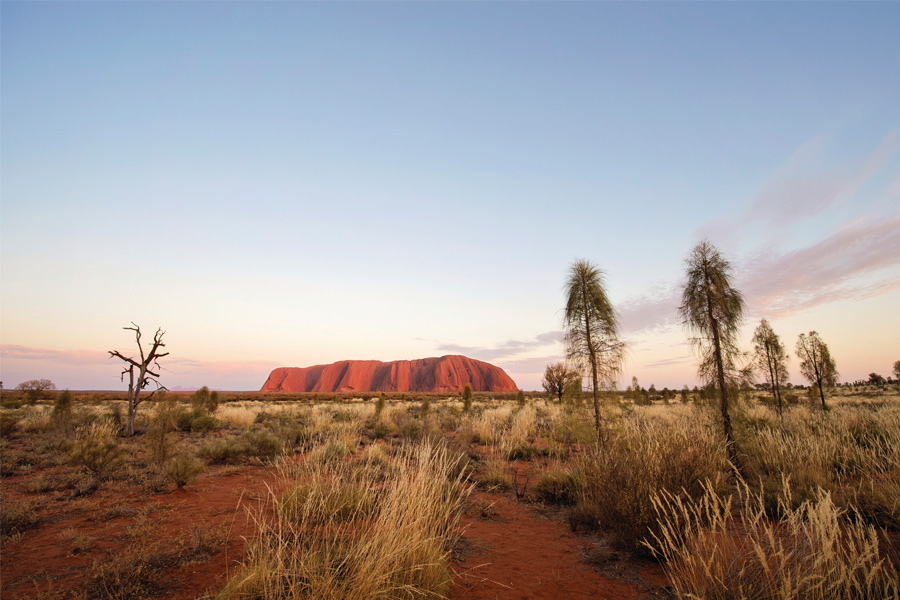

“Mungo Lady” and “Mungo Man” die. Their remains were found in Lake Mungo in NSW in 1969 and 1974 respectively, and are some of the oldest remains of modern humans yet found outside of Africa. As the earliest known cremation in the world, Mungo Lady represents the early emergence of humanity’s spiritual beliefs.
Thanks to modern archaeology, scientists have been able to discover a lot about the lives of Mungo Lady and Mungo Man. Look them up online and research what life might have been like.

The Brewarrina Aboriginal Fish Traps are built. This complicated network of rock weirs and pools stretches half a kilometre along a river bed and was carefully designed to trap fish as they swam upstream. It is believed to be one of the oldest manmade structures on earth.

Aboriginal and Torres Strait Islander peoples lived through massive changes in climate and landscape thousands of years that they inhabited Australia prior to colonisation, which required significant resilience and adaptation to their ways of living. For example, some 30,000 years ago a volcano erupted in South-Western Victoria, the resulting lava flow completely changing the drainage system of the landscape. The Gunditjmara people of the area adapted quickly and constructed an extensive aqua culture system to channel water into low-lying areas, trapping fish and eels.
Imagine that changing weather patterns mean your town is now under-water six months of the year. Discuss these questions:

The Torres Strait Islands are formed when land between Australia and New Guinea is partly submerged by rising sea levels.

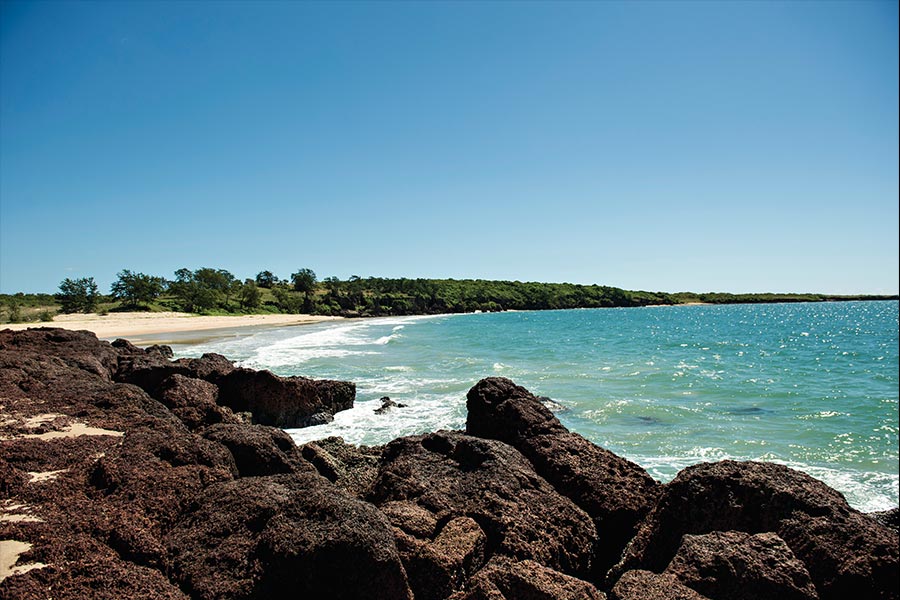
Trading occurred between the Yolngu people from north-eastern Arnhem land and the Macassans (Sulawesi Indonesians) from as early as 1400, although conservative estimates believe regular trade started in the 1700s and continued until 1907. The Macassan people were very fond of ‘trepang’ or sea cucumber, and sailed to Australia once a year to trade for them. The Macassans introduced many new items to Australia such as cloth, tobacco, rice and knives. Interaction with the Macassans also influenced the art style of the Aboriginal people in Arnhem land and many Macassan words filtered into Aboriginal languages of the area.
The Yolngu people arranged stones to tell future generations about their experiences trading with the Macassan people. Using naturally found elements in the playground such as rocks, leaves and bark, create a picture that records a story or event.
Have a look at what your classmates have created and try to guess the meaning behind their picture? Don’t forget to photograph your picture!

Dutch explorers on the ship Duyfken arrive and start to chart part of the Australian coast line. Between 1606 and 1770, approximately fifty-four European ships make contact with Australia.

Lieutenant James Cook charts the east coast of Australia in his ship the Endeavour and claims possession of the whole of the east coast of Australia for the British Crown.
This claim was based on the assumption that Australia was terra nullius, which means ‘land belonging to no one’. In reality, Aboriginal people had been living in Australia for thousands of years and had complex systems of land management which met their needs for food and shelter. Despite myths about Aboriginal people living a ‘nomad’ existence, there is clear evidence to show that there were sophisticated forms of farming being utilised across Australia long before European arrival. Boundaries between different groups are marked by natural divisions such as rivers and mountains, and knowledge of territories is passed down through songs, dance, art and storytelling. Different clan groups across the nation are linked by songs that contain aspects of cultural heritage, mythology, mapping and survival skills.

The First Fleet arrives and builds a settlement at Port Jackson in Sydney, New South Wales. It is the beginning of permanent European settlement of this land. The early years are devastating for the Aboriginal people who live around Sydney Cove. Killings, incarceration, forced removal from land, wars, disease, restriction of movement and early attempts at forced assimilation all occur in these early years.

Pemulwuy is killed. He was a courageous Aboriginal warrior who fought against the British by leading raids against farming settlements. Between 1790 and 1900 there were numerous instances of Indigenous resistance to British settlement and expansion, often referred to as the Frontier Wars. These were a series of conflicts fought between Indigenous Australians and British settlers.

With the British presence in Australia established, settlement spread quickly across the NSW. While in many areas, good relations existed between settlers and Aboriginal people, the century was devastating for Indigenous Australians. When the British arrived there were between 300,000 and 1 million Indigenous people throughout the Australian continent. At least 3 out of 4 Indigenous Australians did not survive colonisation.
The song explores the different ways in which an Aboriginal tracker and a white settler relate to the land. Watch these two videos – the first a Kev Carmody & Paul Kelly song This Land is Mine from the film One Night the Moon and the second a video with Kev Carmody explaining the writing of the song.
Write a short story or create artwork inspired by this song, considering the perspectives of both characters.

In 1835, John Batman, a pastoralist and explorer, tries to make a treaty with Aboriginal people for Port Phillip Bay by ‘buying’ 243,000 hectares with 20 pairs of blankets, 30 tomahawks, various and other articles and an annual tribute. But Governor Bourke does not recognise the treaty.

The Commonwealth of Australia is established as a self-governing nation. The Australian Constitution, which remains to this day the foundation for the legal power in the Commonwealth, came into force on the 1st of January 1901 and establishes the government, defining its structure, power and procedures. This moment is known as “Federation” as it is when the independent colonies (which we now know as states) came together under a ‘federal’ system of government.
While Federation was a time of celebration for most non-Indigenous Australians, for Indigenous Australians little changed. The power to make laws relating to Aboriginal and Torres Strait Islander people remained with the states and Indigenous people were excluded from voting, pensions, employment in public offices and maternity allowances.
Aboriginal and Torres Strait Islander cultures already had their own system of laws prior to British arrival. Research some of these laws and explore how they could be recognised today.

The NSW Aborigines Protection Board is given powers to remove Aboriginal children from their families without a court hearing.
Aboriginal children are excluded from public schools in NSW and instead are sent to Aboriginal-only schools where the syllabus focuses on manual activities rather than literacy and numeracy.

World War I. Despite the prohibition against ‘non-European’ people enlisting, Aboriginal soldiers are among the Australian troops at Gallipoli.

In April 1925, the Australian Aboriginal Progressive Association is formed and holds the first of four highly successful conferences in Sydney. This mobilised support from a growing number of non-Indigenous organisations, including philanthropic, humanitarian and church groups.

On the 150th anniversary of the arrival of the First Fleet, a re-enactment of the landing of Captain Arthur Phillip is planned in Sydney. Aboriginal people from the area refuse to take part in the re-enactment and instead men from Western NSW are brought to Sydney and locked up in the Redfern stables until they were forced to take part in the re-enactment. A protest, in the form of a conference exclusively for Aboriginal people, is organised by Jack Patten, William Ferguson and William Cooper, and declares January 26 a Day of Mourning. This was the first national gathering of Aboriginal Australians protesting against the prejudice and discrimination that was a daily part of their lives.

Over 150 Aboriginal people pack-up and leave the Cummeragunja Aboriginal Station in the first ever mass strike of Aboriginal people in Australia. They protest their cruel treatment and exploitation by the management of the station. The Cummeragunja walk-off is the result of a series of events that made living on the station increasingly unbearable for residents, including the removal of children, the leasing out of essential farming equipment to other stations, the lack of adequate water supplies and the ending of paid wages from 1929. Jack Patten, who had helped organise the Aboriginal Day of Mourning the year before, spoke to the Cummeragunja residents about their rights and the conditions on other Aboriginal reserves. It has been suggested that this speech gave the Cummerajunga residents the inspiration they were looking for to commence their protest.
Imagine you are one of the Cummeragunja strikers. Write a letter to the local newspaper outlining why you are on strike.

World War II

Margaret Williams becomes the first Aboriginal person to graduate from an Australian University.

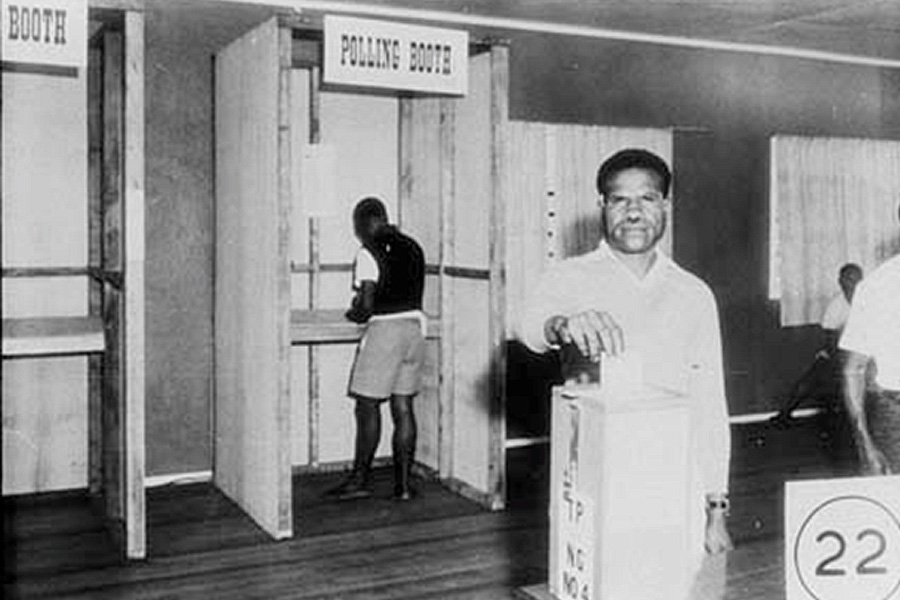

The right to vote is extended to all Aboriginal and Torres Strait Islander people.
The Yirrkala Bark petitions are tabled in Australian Parliament. These documents, signed by twelve clan leaders from the Yolngu region of the Northern Territory, call for the House of Representatives to reconsider its decision to allow 300 square kilometres of land to
be excised for mining and to send a committee to speak to the Aboriginal elders of the area. The petitions include designs painted in ochre depicting Yolngu law and connection to the land, and a typed document written in two Yolngu languages with an English translation.

Charles Perkins leads a freedom ride by Aboriginal people and students through NSW in support of Aboriginal rights.
Research the Freedom Rides and create a map showing where the bus went. Write a story from the perspective of one of the students on the journey.

Wave-Hill Walk Off.
Find out how this walk off started as an issue about wages and working conditions and became about land rights. Research and discuss how long this took, the impact of this Walk Off nationally and who were involved.

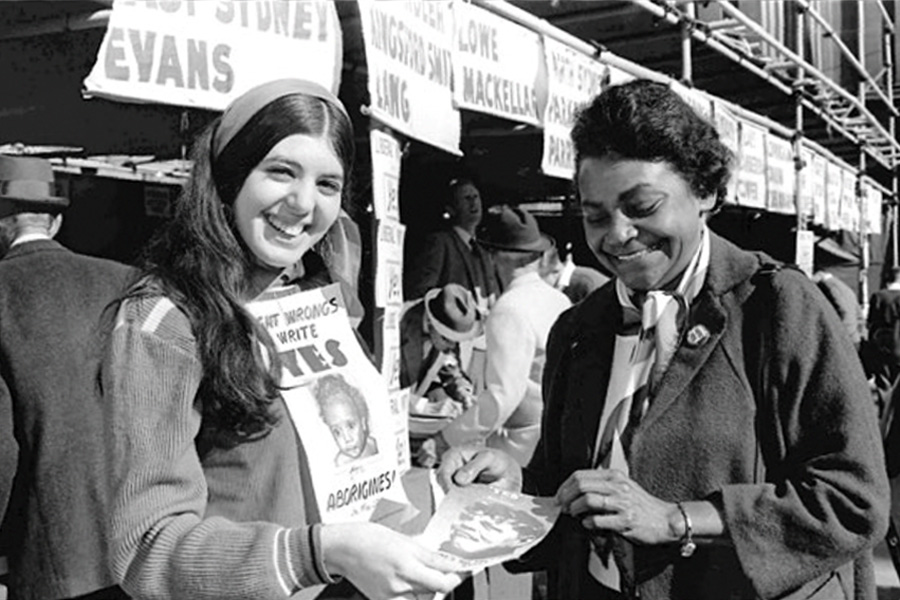
Australia votes in a referendum to enable the Commonwealth to create laws for all Aboriginal and Torres Strait Islander people and to enable them to be included in the census. A referendum is the only way to make changes to Australia’s constitution. Many Aboriginal people considered these changes to the constitution to be ‘essential in gaining formal recognition of their existence as people of their own country’. Over 90% of voters supported the changes, making this the most successful referendum in Australia’s history.
Why do you think this referendum was so successful?
Do you think this event is a significant moment in Australia’s history? Why/why not?

Neville Bonner becomes the first Aboriginal member of the Australian Federal Parliament.

Aboriginal Artist Harold Thomas designs the Aboriginal flag. The black represents the Aboriginal people, the red represents the red earth, red ochre used in ceremonies and the spiritual relationship with the land, and the yellow represents the sun, the giver of life and protector.
Why do you think it is important for people to have a flag that they identify with?
Have a go at creating a new flag that reflects the theme Where’s Your Country?

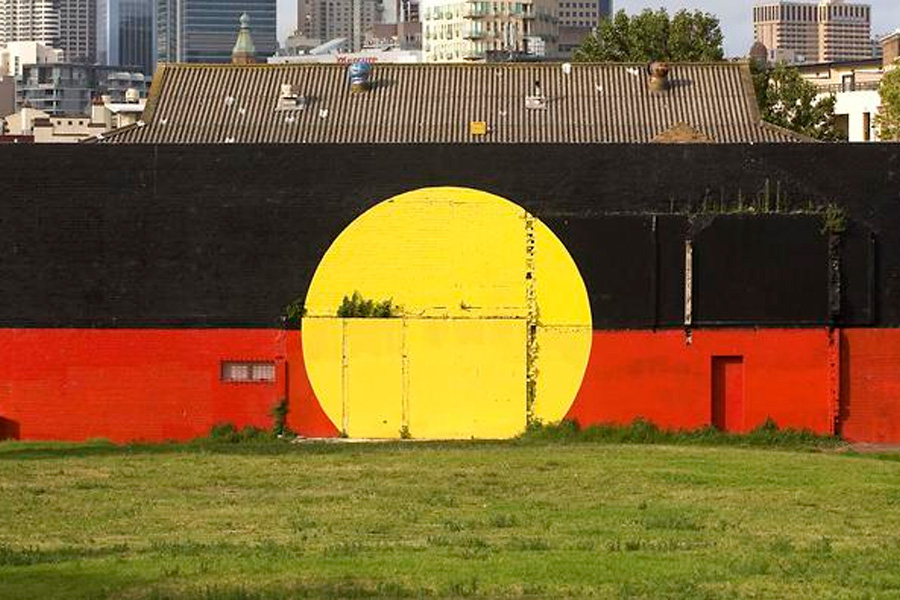
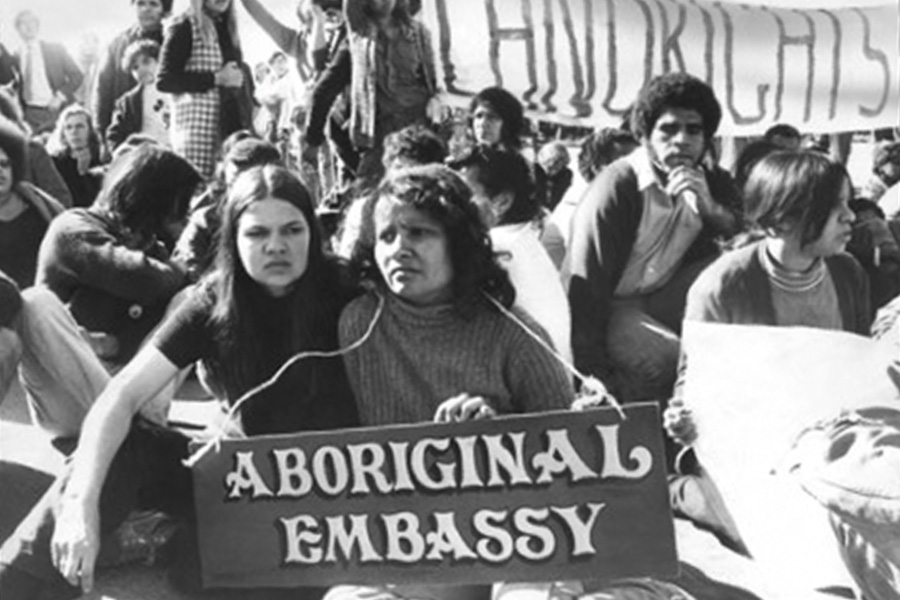
Four young Aboriginal men setup a beach umbrella on the lawns outside Parliament House in Canberra with a sign reading “Aboriginal Embassy”. In the months that follow, 2000 people join the men. The embassy becomes a physical expression of the way that Aboriginal people feel like outsiders or foreigners in their own country. The Aboriginal Tent Embassy is one of the most prominent protests for the return of traditional lands and continues to this day.

Aboriginal Lands Right Act (Northern Territory) passed. This is the first attempt by an Australian government to legally recognise the Aboriginal system of land ownership.

Hand back of Uluru to its traditional owners.

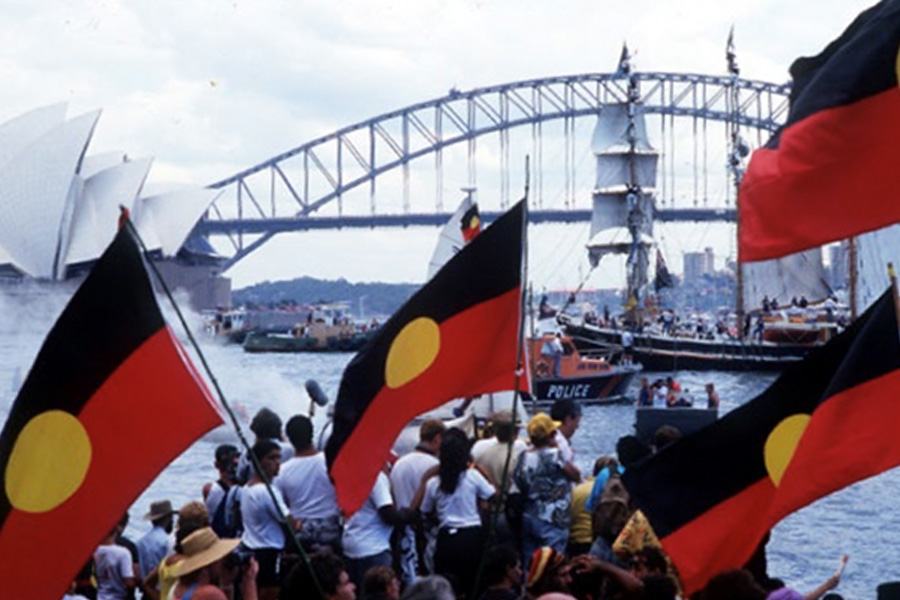
On the 26th of January Australia celebrates its bicentenary, 200 years since the arrival of the First Fleet, with huge events held around the country. As a statement of survival, and as a mechanism to highlight the way Australian history has excluded Aboriginal voices, more than 40,000 Indigenous and non-Indigenous people stage a march in Sydney. Aboriginal activist Gary Foley speaks to the crowd telling them that “…it’s so magnificent to see black and white Australians, together in harmony. This is what Australia could and should be like”.
Do you think there is a way to celebrate both the resilience of Aboriginal culture and Australia’s colonial history on the 26th of January (what we currently call Australia Day)?
As a creative writing challenge, have a go at writing two diary entries for the 26th of January 1988

The High Court of Australia passed down the judgement in Mabo which recognised that Native Title did in fact exist and that Australia had not been terra nullius at the time of European settlement

Prime Minister Keating delivers his ‘Redfern Address’ to a predominately- Aboriginal crowd in Sydney. It is the first time that an Australian political leader has publicly acknowledged the impact of colonial and contemporary government policies on Aboriginal and Torres Strait Islander people.

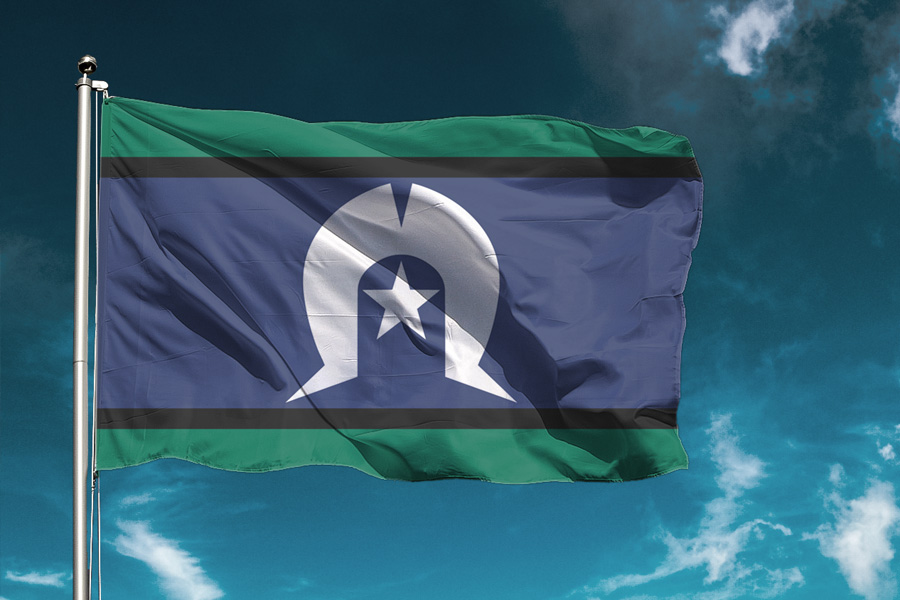

The Torres Strait Islander flag is designed by Bernard Namok.
What do the different symbols and colours in the Torres Strait Islander flag represent?
On Sunday 28 May 2000 more than 250,000 people participated in the Corroboree 2000 Bridge Walk across Sydney Harbour Bridge in support of Indigenous Australians. The event highlighted the issue of a lack of an apology by the (then) Australian Government to the Stolen Generations.

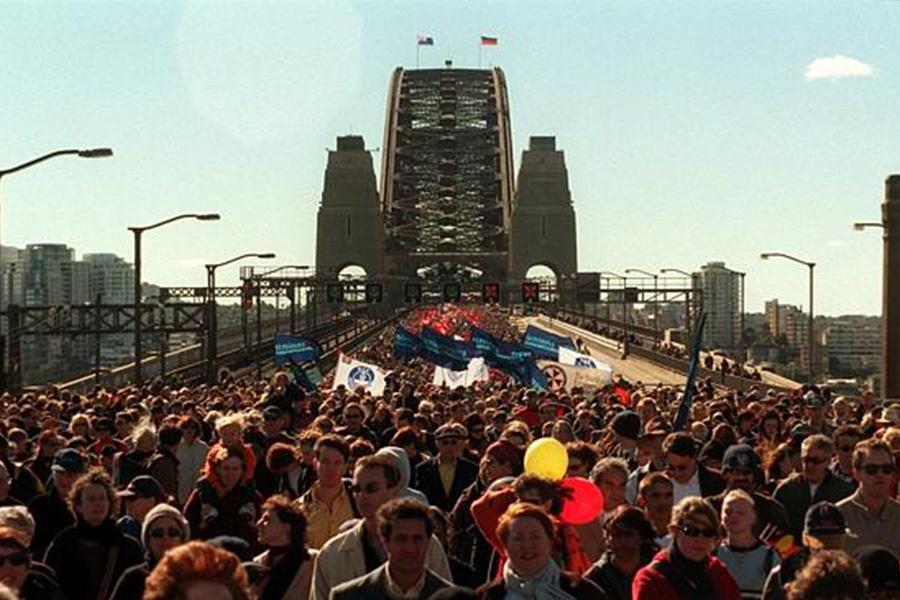
Australia’s first national 24-hour Indigenous television service, NITV, launches.

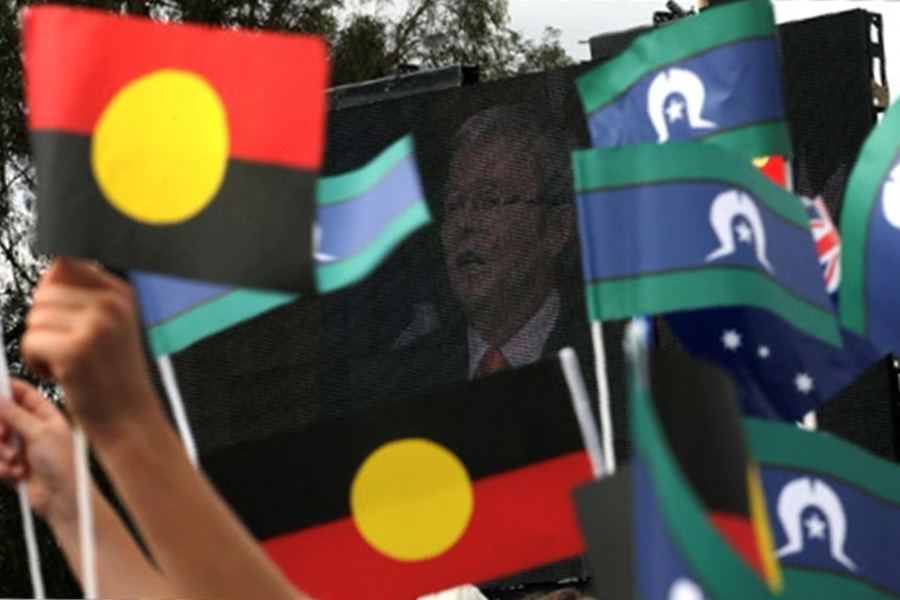
Australian Prime Minister, Kevin Rudd, offers an apology to Australia’s Indigenous people for the Stolen Generations.
The Stolen Generation refers to the Aboriginal and Torres Strait Islander children who were forcibly removed from their families by government, welfare and church authorities and placed into institutional care with non-Indigenous foster families. These forced removals began in the mid-1800s and continued as late as 1970. Stolen children were often abused and neglected in the homes and institutions they were sent to and denied contact with their families. The Apology was a very important step in Australia’s journey to reconciliation.
“There comes a time in the history of nations when their peoples must become fully reconciled to their past if they are to go forward with confidence to embrace their future.”
Prime Minister Rudd
What do you think Prime Minister Rudd meant in the above quote?
Do you agree? Why/Why not

The National Centre of Indigenous Excellence opens in Redfern.

Aboriginal AFL player and community leader Adam Goodes is named Australian of the Year for his involvement in programs that support Indigenous youth. He uses his acceptance speech to address the issue of racism:
“I believe we are all connected whether we like it or not. We are all equal and the same in so many ways. My hope is that we as a nation can break down the silos between races, break down those stereotypes of minority populations, Indigenous populations and all other minority groups. I hope we can be proud of our heritage regardless of the colour of our skin and be proud to be Australian.”

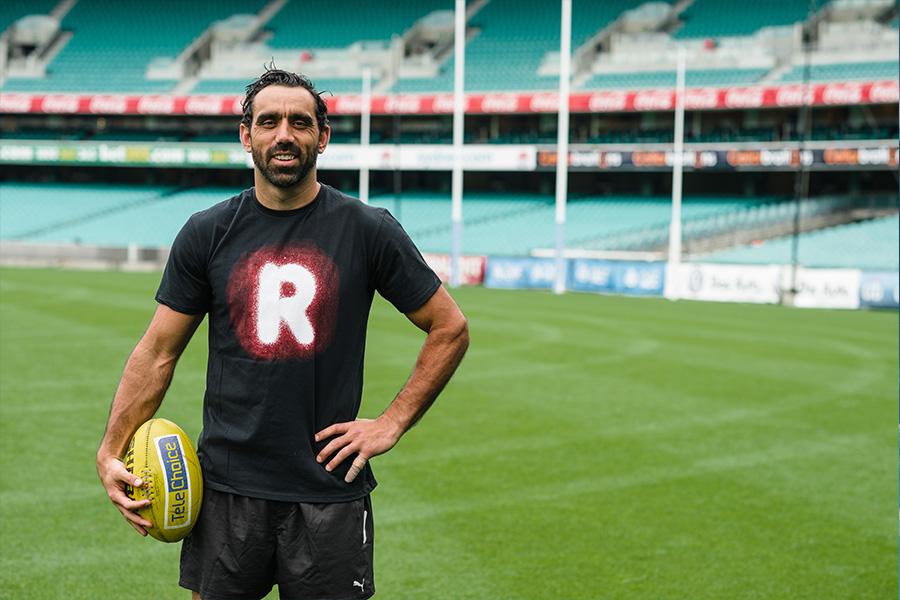
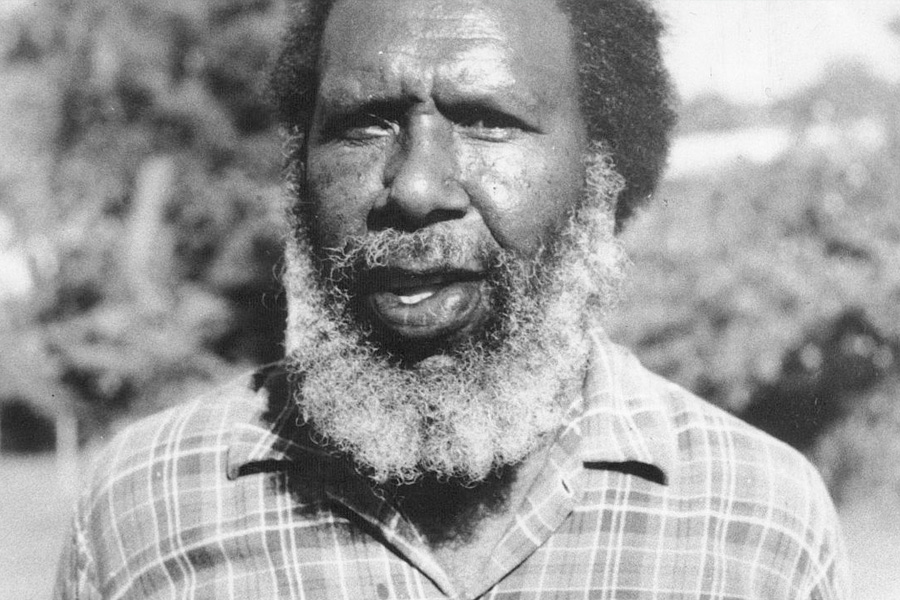
As part of the NAIDOC (National Aboriginal and Islanders Day Observance Committee) Week celebrations, the Sydney Observatory honours Eddie Mabo by naming a star in the Southern Cross after him.

Yininmadyemi Thou Didst Lets Fall, a sculpture by Indigenous artist Tony Albert is unveiled in Hyde Park. The sculpture acknowledges the contribution of Aboriginal and Torres Strait Islander men and women who served in the nation’s military.
Look up or visit Tony Albert’s sculpture. Why is it important to acknowledging Aboriginal and Torres Strait Islander contribution to our defence forces? Create a piece of art that this.

Aboriginal languages became a subject in the HSC for the first time, as part of a renewed effort to keep Aboriginal languages alive in NSW.
Languages are an expression of culture and a vehicle through which to keep culture alive.
What are the local languages in your area? How are they used and recognised?

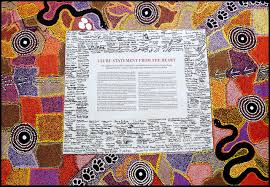
2017
Constitutional Recognition
The Uluru Statement from the Heart was made on the 26 May 2017 by delegates at the Referendum Convention in Uluru. It is a powerful and unique statement of consensus from the many First Nations represented, asking us all to heed their calls and address how Australia’s founding document acknowledges First Nations People.

Together we are responsible for continuing the journey of reconciliation into the future. This land always was, and always will remain sacred for Aboriginal and Torres Strait Islander people.
It is important we celebrate these rich cultures, while also learning from our mistakes. Through understanding and acknowledging what has happened in the past, we can shape a better future for all Australians.
Draw or write about the Australia you would like to see in 100 years’ time.
What has changed and what is still the same?
Where do we live, what do we do, and how do we relate to each other?
Brainstorm ways that we can each shape the future for our country – what can individuals do to make positive changes in society?